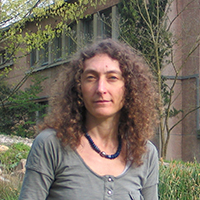ESR 7 – Deep eukaryotic phylogenomics
Research project
Despite the astonishing variety of plants, animals and macroscopic fungi, most eukaryotic diversity is microbial. Establishing evolutionary relationships among microbial groups has proved difficult. This explains why a fully resolved phylogeny for eukaryotes is still lacking, and with it, the traceable evolution of articular eukaryotic features (e.g. multicellularity, the ability to precipitate particular minerals). Based on current knowledge, eukaryotes form several large monophyletic supergroups. However, several important lineages remain to be anchored in the eukaryotic tree and the relative order of emergence of those supergroups is uncertain. Part of this uncertainty comes from taxon sampling bias, since cultured eukaryotes represent a minor fraction of their natural iversity. Over the past fifteen years, molecular tools based on 18S rRNA gene amplicon sequencing (either via cloning and Sanger or via high-throughput sequencing methods) and metagenomic analyses, have uncovered a wide diversity of microbial eukaryotes in many different environments. Many of the sequences identified correspond to groups with described members but many others correspond to clades without described members. Among them, some occupy basal positions at the base of the eukaryotic tree or large supergroup branches and might therefore be useful to resolve their evolutionary relationships and infer their ancestral features. The main objectives of this ESR, some of which will be done in collaboration with ESR3 will be to i) obtain a single-cell based overview of microeukaryotic diversity from selected poorly studied habitats in order to identify deeply branching microeukaryotes, ii) generate single-cell amplified genomes/transcriptomes from phylogenetically divergent lineages and microeukaryotes producing specific biominerals, especially from uncultured lineages, iii) identify functional genes involved in biomineralization, and iv) make phylogenomic analyses to improve the global phylogeny of eukaryotes, characterize last common eukaryotic ancestors and trace the evolution of controlled biomineralization, potentially useful to date specific nodes in the tree, and/or other group diagnostic traits.
Supervisor
Early Stage Researcher
Host institution and location
PhD Program
Structure et Dynamique des Systèmes Vivants, Université Paris-Sud/Université Paris-Saclay
Expected Results
Better characterization of microeukaryotic diversity, including biomineralizing lineages, from understudied environments. Identification of deeply divergent lineages and improvement of taxon sampling in large-scale eukaryotic phylogenies. Improving the resolution of the eukaryotic tree and gaining insights into he evolution of biomineralization in eukaryotes and its potential use for dating purposes. Better characterization of the last common eukaryotic ancestor and subsequent ancestors.

 Download SINGEK_ESR7_project_description.pdf
Download SINGEK_ESR7_project_description.pdf 

